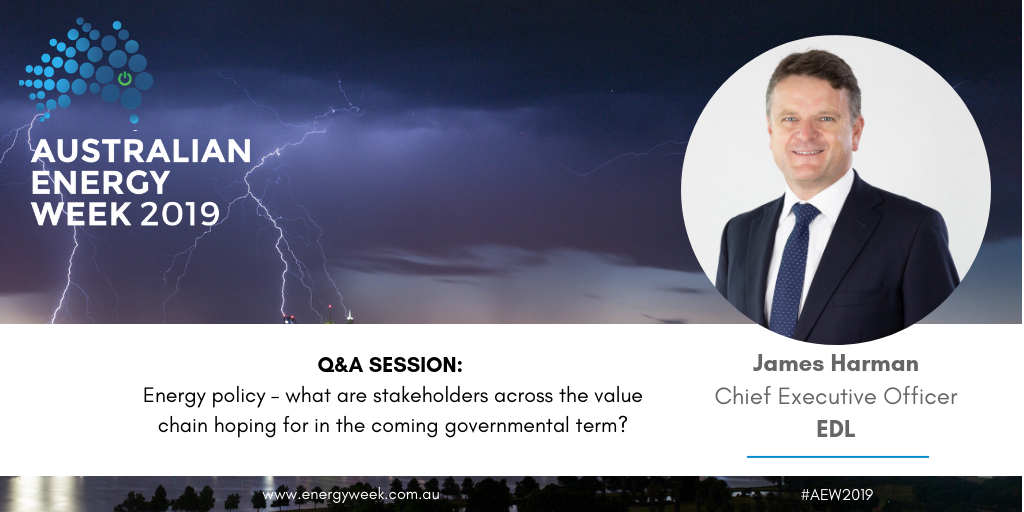

1. Are you optimistic about a federal energy policy that is acceptable to all (or most) stakeholders being implemented post-May?
Yes I am. Its been a long journey but we’ve learned some valuable lessons along the way—most importantly, that it’s not about a single, “silver bullet” policy. Rather, it’s a set of fit-for-purpose policies that integrate well. We’ve had 20 years’ experimenting with various policy tools—some “push”, some “pull”, some market-based, some more traditionally regulatory. We’ve also seen what has delivered results overseas. I think we’ve arrived at a place where we have a good understanding of which approaches not only work, but work well together. And the package that works best is the one that addresses all three limbs of the “Energy Trilemma” (a secure and reliable, environmentally sustainable, least-cost supply) together, effectively and efficiently.
2. Are there any particular points of energy policy that you are advocating for?
Yes. First, given the technology rate of change we’re seeing, I think it’s important that we apply technology-neutral policies as far as possible—there is simply too much at risk to pick winners. It’s also important to support innovation to find the solutions of tomorrow because that tomorrow is coming up fast. Second, and in a way it’s a variation on the first point, policies should be as market-based as practical. There is a certainly a role for government to frame market objectives, ensure meaningful competition and help address the impacts of the energy transition for vulnerable stakeholders. But the purpose and scope of any intervention should be clear and based on removing or reducing market barriers. Some governments, particularly in the last few years, have seemed more willing to leap in with heavier-handed approaches. I think that a better understanding of, and dialogue about, where the energy industry is headed would have allowed a more graduated, lower risk approach. Finally, given the global nature of climate change and the interconnected world we live in, it’s important that what we do in the energy sector is well aligned with, and supports, those things that are happening outside it.
3. What do you think will be the long-term implications of continuing without a federal policy for the energy market?
The single most important lesson of the last decade is that Federal policy stability is absolutely critical to investment confidence. Without it, we can’t deliver the reliable, sustainable, least-cost solutions our customers want.
4. How do you see federal and state energy policies interacting in the future? Do you think they will diverge or integrate?
Going back to my first answer, I think all levels of government now have a far better understanding of the challenges involved in the energy transformation and what we, collectively, need to do to address them. This suggests to me that we’ll inevitably see a better alignment between the Federal and State Governments moving forwards. Bluntly, our international competitiveness and our quality of life depend on it.
5. AEMO’s Integrated System Plan (ISP) is being seen by many in the industry as a surrogate-energy policy framework around which to plan investment in the absence of an official government policy - what are your thoughts on, and hope for, the ISP?
I think that the ISP has the potential to be a key tool to help us move forward sensibly. However, it’s important to remember that there are many moving parts to the energy transformation, so much so that no one tool can capture and address them all. What then matters is, first, the quality of that tool and, second, having a clear picture of how it integrates with the other policies and tools that industry, government and other energy stakeholders have at their disposal. And the key to both of these is the quality of the engagement that informs them. As I’ve said, I think we’re all learning to engage better but there’s still a significant distance to travel. In particular, I’m not confident that, as an industry, we can neatly roll everything that’s happening at the local level up to a single national view. I’m not even sure that doing so would necessarily be the best approach.
James will be presenting on 13 June on the Future Grid stream (15:30) at Australian Energy Week.
Australian Energy Week 2019: Your one-stop to understand the whole of the energy market
AEW is the most comprehensive energy event in Australia. It is the annual meeting place for stakeholders of all levels from the entire energy value chain, from CEOs to analysts, energy traders to engineers. And everyone in between.
The agenda takes in the full breadth of policy and regulatory changes, competitive and technological disruption, as well as movements in consumer trends. You will understand the challenges and opportunities facing generators, networks and grids, right through to Commercial & Industrial end-use and residential retail.
To view the full 4-day programme and confirmed speakers, DOWNLOAD THE BROCHURE HERE.

